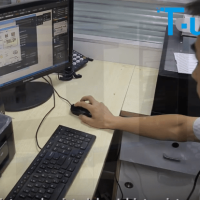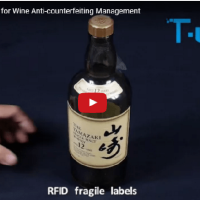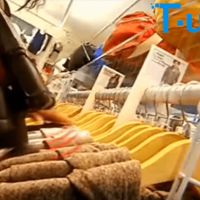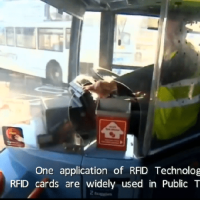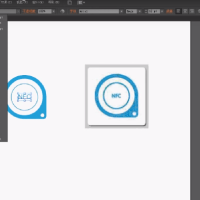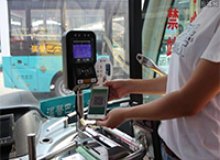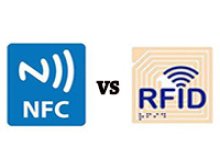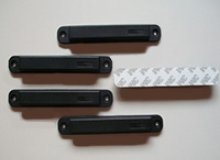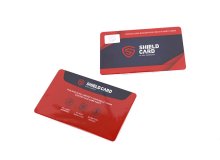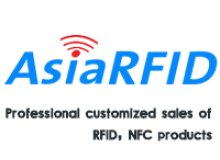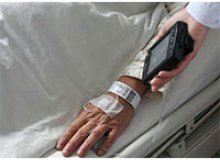Blog Categories
RFID News


RFID News
Explanation and Practical Application of NFC and RFID
in RFID Journal, RFID News on Jun 21, 2019
In our daily life, there are many uses of NFC and RFID products, such as our mobile phone's NFC function, fast order purchase, through the gate, links to use equipment, RFID products are more manifested in access cards, bank cards, clothing labels, asset management, unmanned supermarkets, payment, and so on. Today, asiarfid will explain the application of NFC and RFID for you.
What is NFC? What is RFID? What's the difference between NFC and RFID?
in RFID Journal, RFID News on Jun 14, 2019
NFC technology originated from RFID technology, but there are some differences compared with RFID. So what is the difference between NFC and RFID? Today, asiarfid takes you to understand what is NFC technology, what is RFID technology, and how they differ.
What are the differences between active and passive RFID tags?
in RFID Journal, RFID News on Jun 12, 2019
Passive RFID tags have no power supply; they are activated by the electromagnetic wave emitted by the reader and then send the information back to the reader. The practical range of passive RFID tags is about 10 cm to several meters.Active RFID tags have a built-in power supply and a microprocessor for special tasks. The data transmission range of active RFID tags is much farther than that of passive tags; an active RFID reader can monitor all active tags within 100 meters.
The difference between IC card and magnetic card
in RFID Journal, RFID News on Jun 10, 2019
In our daily life, we use many kinds of cards, such as bus cards, bank cards, access cards, identity cards, etc., very many. At first, most of the cards used magnetic cards, because magnetic cards are easy to wear and interfere and lead to failure, so now many cards are used IC cards, then what is the difference between IC cards and magnetic cards?
What’s anti-metal RFID tag? What's the functions?
in RFID Journal, RFID News on Jun 05, 2019
Anti-metal material is a special kind of electronic tag encapsulated by antimagnetic absorbing material, which technically solves the problem that electronic tag can not be attached to metal surface. The product can be waterproof, acid-proof, alkali-proof, collision-proof, high temperature-resistant, stable and effective.
About RFID card with chip
in RFID Journal, RFID News on Jun 03, 2019
Up to now, card plays an indispensable role in our daily life. We pay in restaurants, we shop in supermarkets, and when we travel by means of transportation, the NFC or RFID cards in our hands are indispensable.
RFID technology makes logistics sorting more convenient
in RFID Journal, RFID News on May 29, 2019
The emergence and rapid development of e-commerce and logistics industry, warehousing size and management are also facing great pressure, which greatly increases the cost of manpower and material resources. RFID technology solves the complex and onerous sorting tasks in warehousing logistics management and the management of warehousing goods. Make warehouse management more automated and informationized.
What is contact IC card?
in RFID Journal, RFID News on May 27, 2019
Contact smart cards are the same size as traditional credit or debit cards. It contains a single embedded integrated circuit chip, which includes memory or memory plus microprocessor. Contact smart cards must be inserted into card receiver devices. The needle connected to the card reader "contacts" the pad on the card surface to read and store the information contained in the card chip.
About cheap RFID inkjet PVC white cards for sale
in RFID Journal, RFID News on May 24, 2019
AsiaRFID is a one-stop service factory focusing on the sales of RFID and NFC products. We have the cheapest price, the highest quality service and the most durable products.
Today, asiarfid will introduce you about the RFID inkjet PVC white card.
Comparison of RFID Module blocking Card and RFID Metal Shielding blocking Card
in RFID Journal, RFID News on May 20, 2019
Asia RFID is a one-stop service factory in Asia. We can provide high quality RFID products and services. Our products are diverse, including RFID tags, RFID cards, RFID wristbands, NFC tags, NFC cards and other products.
Why do customers like to customize RFID Tags?
in RFID Journal, RFID News on May 17, 2019
As one of the main means of automatic data acquisition, RFID technology is an indispensable part of the RFID system. However, in most cases, tags are not universal, but can choose different electronic tags according to the needs of the scene.
Handheld RFID Reader Solves Medical Management Difficulties
in RFID Journal, RFID News on May 15, 2019
As a fast data acquisition intelligent device, the RFID handheld terminal optimizes the process of doctor's advice execution and information input, avoids the operation of manual checking the patient's identity, reduces the manual record of medical staff, and greatly reduces the rate of medical accidents.
© 2024 XINYETONG TECHNOLOGY DEVELOPMENT CO.,LTD All Right Reserved Asiarfid



